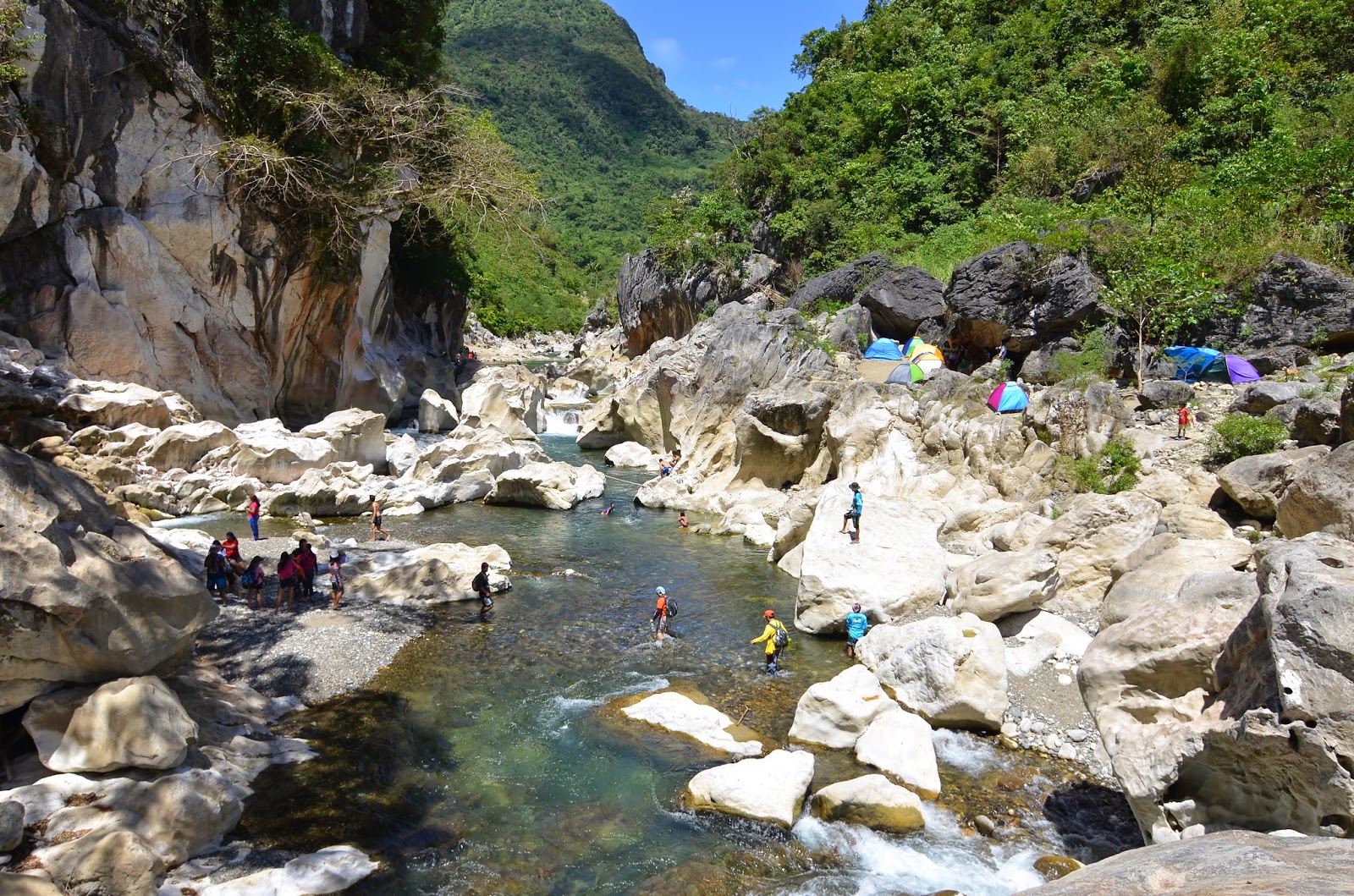By Nina Dumlao – Photographer, WAFP
Admin and Events Organizer
I first saw the
beauty of Tinipak River in Daraitan, Rizal, from a friend's Facebook post.
Since then, I told myself that I will go visit this place one day. So I decided
to ask a mountaineer friend, Roberto Labaniego, if he could accompany me and my daughter. I
was so glad he said yes. We went twice, the second one being with a bigger
group during a FUNLakwatsa Adventure
with 21 members of We are FUNtastic Philippines.
Photo
by Nina Raymundo Dumlao
The day finally
came and all 21 of us were raring to go. The first two hours of the trip was an
easy drive but getting closer to Brgy. Daraitan was an approximately nine-kilometer
stretch of major rough road with sharp rocks. The place is protected and
maintained by the local govt. of Brgy. Daraitan, every visitor is required to
pay P20 for the registration fee and P500 tour guide fee which is good for
eight people.
Photo
by Nina Raymundo Dumlao
A few minutes
into the trail, you would see beautiful river scenery with rocks and boulders,
trees, and clear, running water. It took us twice the time of the usual
20-minute hike because of the photo stops and breaks. We descended down going
to the major point of Tinipak River by way of narrow wooden (seemingly rickety)
bridge and ladders, climbing down the huge, white boulders by the riverbank,
which in itself was already quite a challenge for newbies like us who are not
familiar with hiking.
Photo by Art Soriano
We were all
amazed at how awesome this place is (even for the second time around, I still
marveled at its beauty). We found a spot near the entrance of Maytuntong Cave
(commonly called Tinipak Cave) where we settled, ate our packed lunches, dipped
in the brook nearby (with clean drinking water) while chit-chatting the time
away.
Photo
by Nina Raymundo Dumlao
At 1 p.m., it
was time to go spelunking. The first time I went, I wasn't able to go in the
cave and I promised myself I will not fail the second time around. The entrance
of Maytuntong Cave is different from the ones I've seen; you need to climb down
into a hole on the ground which is approximately 20 feet deep with the rugged
rocks as stepping stones/ladder.
As we went
deeper into the cave, we saw glittering stalactites on the walls and ceiling
scattered all over.
Farther on, we heard the sound of gushing water. Soon enough, we have reached the cave's natural pool. The water was so clear and cold, but it sure was refreshing. At first glance, there seems to be a deep black hole in the center but it's actually black sand and it was only waist deep, so no worries there.
Farther on, we heard the sound of gushing water. Soon enough, we have reached the cave's natural pool. The water was so clear and cold, but it sure was refreshing. At first glance, there seems to be a deep black hole in the center but it's actually black sand and it was only waist deep, so no worries there.
Photo by Art Soriano
Photo by Art Soriano
Photo by Nito San Luis
At 3 p.m., we
started our hike back. We were made to pass a different route with no paved
trail – we, newbies, were literally bouldering! It was difficult and it took us
almost two hours to get back. Thank, God, nobody was hurt except for a few
scratches and a dead toe nail – not mine.
Nevertheless, the experience was really awesome and memorable… new
friendships were born among us and our Daraitan Adventure never fails to bring
a smile on our faces and so off we look forward to our next adventure!
*** Tinipak
river is a hidden paradise of Brgy. Daraitan in Tanay Rizal, which is located at the foot of the Sierra Madre mountains. It
offers a perfect outdoor adventure from trekking, mountaineering, spelunking
and swimming. Join us in our next adventure!
Join us at We are FUNtastic Philippines
More Photos here DARAITAN FUNLAKWATSA ALBUM
Join us at We are FUNtastic Philippines
More Photos here DARAITAN FUNLAKWATSA ALBUM


















